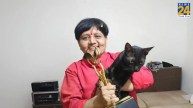Is the Indian economy back on track and will it soon be soaring despite earlier hiccups? When the first quarter of the present financial year witnessed a GDP growth rate of 6.7%, a lower-than-expected rate of 7.1%, all naysayers actively rejected the saga of Indian growth. However, the future is not so bleak with an anticipated spurt in the economic and financial activities unfolding and spiraling soon.
World Bank Forecasts Growth Rate of 7%
The International Bank for Reconstruction Development, better known as the World Bank, has forecasted a GDP growth rate of 7% for the Indian economy despite growing unemployment, falling exports, and widening the rich-poor chasm.
World Bank: India Development Update
In its latest ‘India Development Update: India’s Trade Opportunities in a Changing Global Context’, the World Bank has said that the Indian economy is growing quickly despite challenging global conditions. Boosted by the investment in public infrastructure and real estate projects, the Indian economy recorded a growth rate of 8.2% in 2023-24. It also said in its update that the manufacturing sector witnessed a growth of 9.9%, service sector remained resilient, though the farm sector performed poorly.
The Word Bank Group has said in an article published on its official website that the debt-to-GDP ratio is projected to decline from 83.9% to 82% by 2026-27. It has also said that the current account deficit is expected to remain at around 1-1.6% of GDP up to 2026-27.
India Becomes More Competitive
Expressing concerns over the growing protectionism across the world in recent years, the World Bank Group has said in its report that the global value chain has been reconfigured after the pandemic and it has created opportunities for India. India increased its global competitiveness, through the National Logistics Policy and digital initiatives that are reducing trade costs. On the other hand, India has also increased tariff and non-tariff barriers, which could limit trade-linked investment in the country in the coming years.
Growth To Reduce Extreme Poverty
According to the World Bank’s Country Director in India, Auguste Tano Kouame, India’s robust growth prospects along with declining inflation will help to reduce extreme poverty. He also said that India can boost its growth further by harnessing its global trade potential. The World Bank has also said that besides IT, India can excel in the pharma sector and increase its exports in textiles, apparel, footwear, electronics, and green technology products.
IMF Estimates Growth Rate Of 6.5%
On the other hand, the International Monetary Fund expects a growth rate of 6.5% over the next few years. World Bank has forecast a GDP growth rate of 6.7% for India for 2025-27. The Reserve Bank of India (RBI) has estimated a growth rate of 7.2%, marginally higher compared to 7% of the World Bank.
Indian Economy: What’s To Be Done
However, everything is not hunky-dori. As exports of manufacturing and services have become skill intensive, the World Bank report has expressed concern that both direct and indirect employment related to exports have fallen. Though Finance Minister Nirmala Sitharaman has slashed tariffs on certain imports, much more needs to be done. At a time when India and the UK have reached the stage of inking the FTA, the Word Bank has said that India should sign free trade agreements and seek deeper integration with global value chains.
Soon after the release of the World Bank Update, in which the world body suggested India to enter into FTAs and integrate into the supply chain, India and Singapore signed four agreements on semiconductors, digital cooperation, healthcare and medical research, and education and skill development. AS India has come out with increased subsidies for companies working in the semiconductor sector, the MoU will create a platform to better connect and strengthen the complementary semiconductor ecosystems of the two sides.













